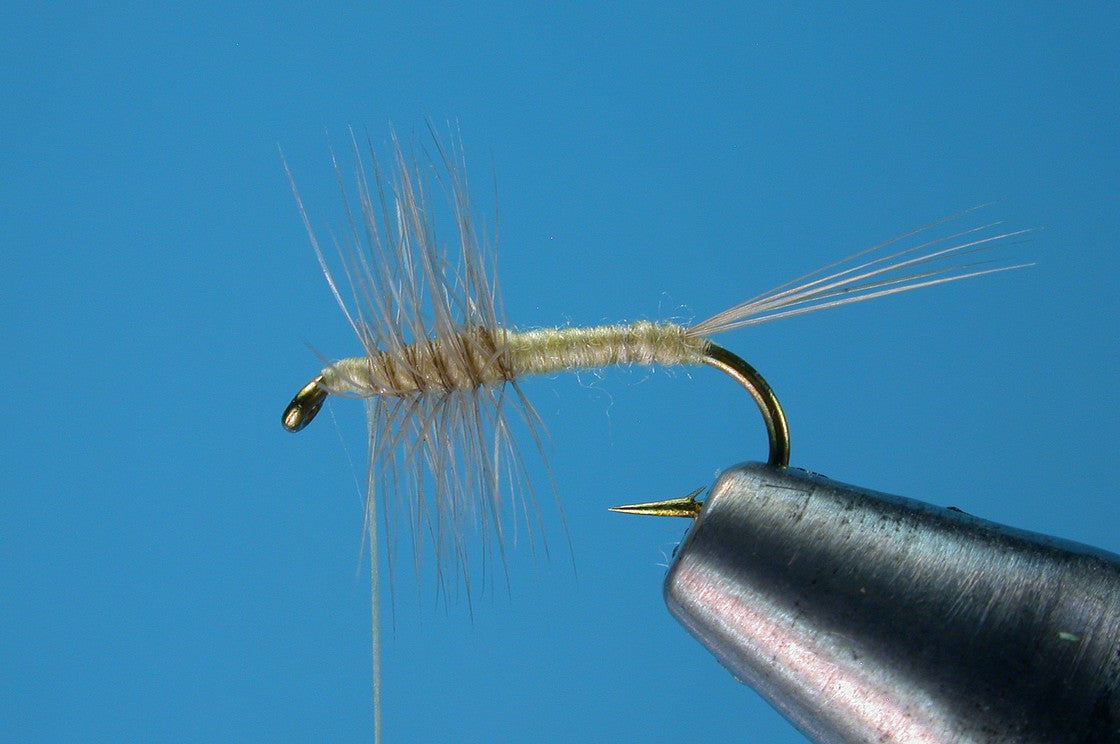The Hair Wing Dun is a pattern from prolific vise of Rene Harrop. Using a hair wing and palmered hackle thorax, Harrop has managed to make a fly that is incredibly accurate as well as buoyant. I will show the Pale Morning Dun version here, but you can of course alter the colors for Blue Wing Olives and Green Drakes. This is an easily tied fly using commonly available materials and should be a worthy addition to your fly box.
Materials Needed:
Hook: TMC 100 #10-22
Thread: UNI 8/0 Light Cahill
Tail: Blue Dun Spade Hackle Fibers
Abdomen: Pale Yellow Superfine Dubbing
Hackle: Blue Dun Rooster Hackle
Thorax: Pale Yellow Superfine Dubbing
Wing: Bleached Deer Hock
Step 1
Start the thread and wrap a base back to the bend. Build a small ball of thread at the bend of the hook.

Step 2
Tie in a dozen hackle fibers for the tail at the immediate front edge of the thread ball. Wrap the thread back over the base of the tails to the front of the ball to flare the tail.

Step 3
Dub a tapered abdomen to just past the mid-point on the hook. Make sure to have a bit more dubbing on the thread here, as we are going to tie our hackle in with the dubbed thread to keep the abdomen and thorax continuous.

Step 4
Strip the base of a rooster hackle feather so there is about a half shank of bare stem exposed. Tie in the feather by its butt end at the front of the abdomen using the dubbed thread to work forward over them stem. You are tying in the feather and building the thorax at the same time here.

Step 5
Dub the thorax forward to about an eye length back from the eye.

Step 6
Spiral wrap the hackle forward to the eye with about five turns and tie it off. Clip the excess. Build a thread base from the front of the thorax to the hook eye and back again.

Step 7
Cut, clean and stack a clump of deer hock. Measure the hair against the hook so it is a shank length long. Place the measured tips of the hair into your material hand and cut the butt ends of the hair so the remaining clump is just a shade longer than the hook shank.

Step 8
Place the butt ends of the hair just behind the hook eye and put two firm wraps of thread around them. Pull the thread toward you to flare the hair slightly. Wrap the thread tightly forward through the butt ends of the hair to the eye.

Step 9
Trim the hackle on the bottom of the fly to just shorter than the hook point.

